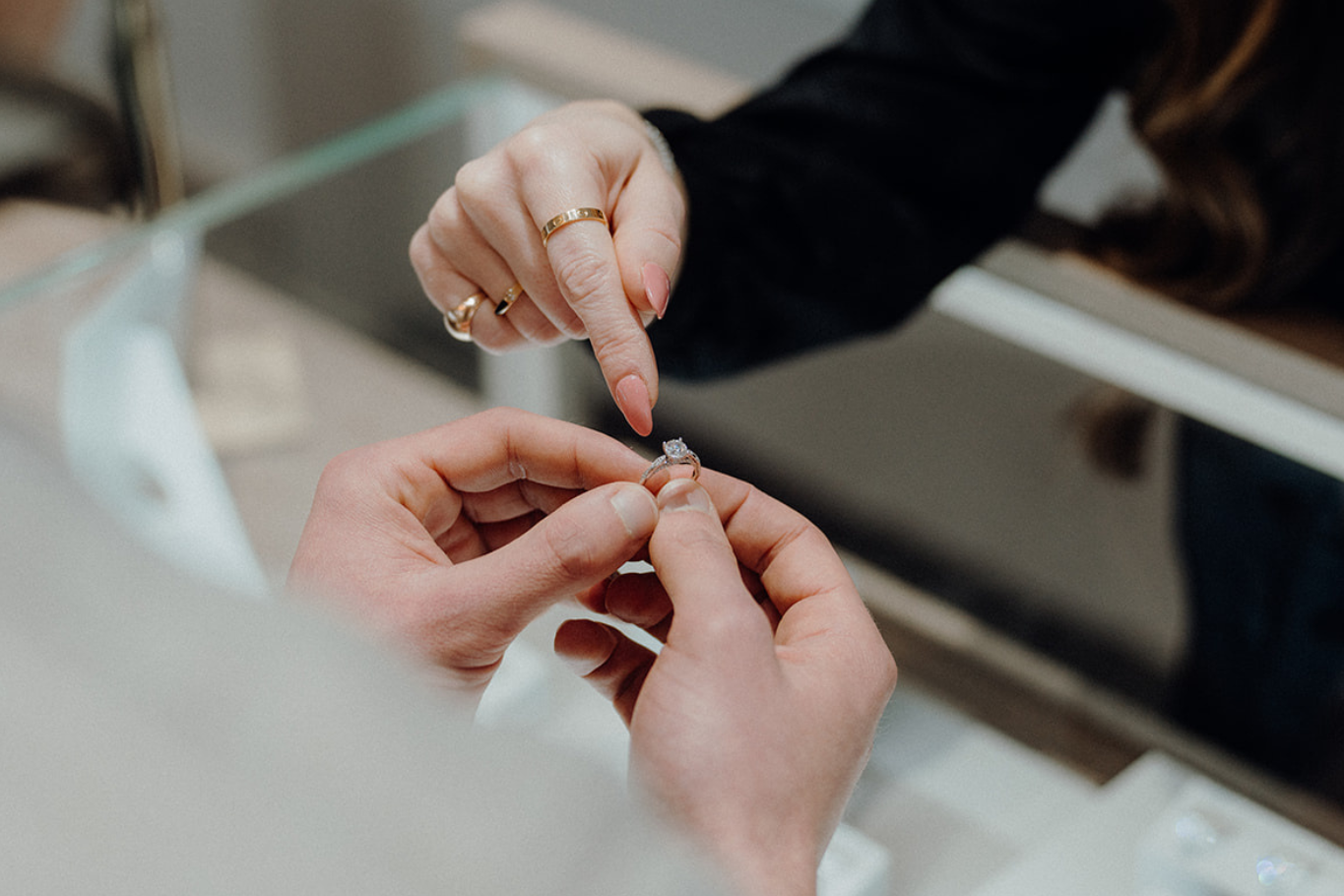Your Guide to Diamond Cuts: What You Really Need to Know Before You Buy
Buying a diamond ring—especially an engagement ring—is a big deal. For many people, it’s the first significant jewelry purchase they ever make, and there’s a lot of pressure to get it right. That’s why we’ve created this simple, stress-free guide to understanding diamond cuts—one of the most important things to know before you shop.
The good news? You don’t have to spend hours researching online to feel confident in your choice. At Colonial Jewelers, a fourth-generation family-owned business located in the heart of Downtown Frederick, MD, we’re here to help you find the perfect diamond—without the overwhelm.
Why Does a Diamond Sparkle?
Ever wondered why diamonds sparkle the way they do? It's all about how the light hits and bounces around inside the stone. Think of it like a rainbow: when light passes through water droplets in the sky, it breaks up into beautiful colors. Diamonds work in a similar way—when cut correctly, they bend and reflect light in just the right way to create that magical sparkle, also called brilliance and fire.
What Makes a Diamond Cut "Excellent"?
The cut of a diamond isn’t just about its shape (like round, oval, or princess)—it’s actually about how well the stone is crafted. A well-cut diamond will reflect light beautifully, while a poorly cut one may look dull or dark, even if it’s big or high-quality in other ways.
Here are the key parts of a diamond cut:
- Proportions: The balance between the diamond’s height, width, and depth. These affect how light travels through the stone.
- Symmetry: How precisely the facets (flat surfaces) are aligned. Better symmetry means better light reflection.
- Polish: The smoothness of each facet. Well-polished diamonds sparkle more because light moves easily across their surface.
What About Color and Clarity?
- Color: Most diamonds have a slight hint of warmth (yellow or brown), but many people prefer diamonds that look “colorless.” These are graded from D (most colorless) to Z (noticeably tinted). There’s no right or wrong here—it’s all about your personal preference and what looks best in your setting.
- Clarity: This refers to natural marks (called inclusions) or surface flaws (blemishes). These are completely normal and often invisible without a magnifying glass. At Colonial Jewelers, our gemologists hand-pick each diamond to make sure the clarity features don’t take away from its beauty.
What Does Carat Really Mean?
Carat is often confused with size, but it actually refers to weight. Two diamonds can have the same carat weight but look totally different depending on how they’re cut. Our experts make sure each diamond not only weighs well but looks brilliant, too.
Why Shop with Colonial Jewelers?
Choosing a diamond should feel exciting, not intimidating. At Colonial Jewelers, you’ll get:
- A curated collection of hand-selected diamonds and gemstones
- Friendly, knowledgeable experts (including GIA-certified gemologists)
- An in-house master jeweler with decades of experience
- A local business trusted by generations for over 75 years
From your first step into our showroom to the moment you say “yes” to your ring, we’re here to guide you every step of the way.
Ready to find the one? Book an appointment today and let us help you choose a diamond you’ll love for a lifetime.
